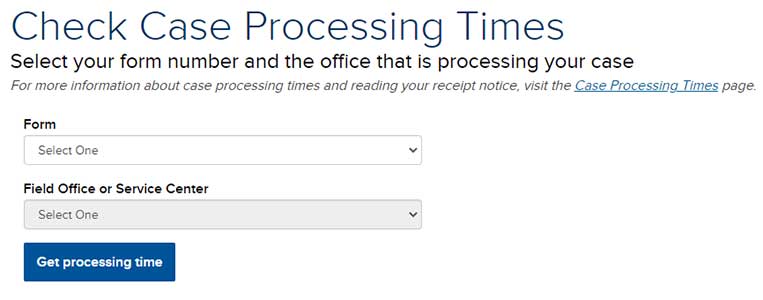Immigration Reform & Processing Times
What Does Immigration Reform Look Like Under The Biden Proposal?
Under Executive Action, the president has the authority to pass without the approval of Congress, such as DACA, TPS, certain asylum policies and prosecutorial discretion (deciding who gets put in deportation proceedings and who doesn’t). A president can profoundly affect immigration, which we saw during the Trump era in a negative way, but now we’re going to start seeing a lot of that in a positive way!
Immigration reform, on the other hand, is a legislation, not executive action. It’s not a policy that Biden can just announce. Immigration reform would need approval of Congress.
Biden’s immigration reform is hundreds of pages. As a candidate, he called Trump’s actions on immigration an “unrelenting assault on American values” and said he would undo the damage while continuing to maintain border enforcement.
Under the legislation that he’s going to request or propose, those living in the United States as of January 1st, 2021, without legal status (that could include TPS, DACA and anyone under deferred action) would have a five-year path to temporary legal status or a green card if they can pass background checks, pay taxes, and fulfill other basic requirements. From there, they’re proposing a three-year path to naturalizations.
For some immigrants, the process would be quicker. So-called dreamers or DACA recipients, the young people who arrived in the US as children, would qualify more quickly for immediate green cards.
We’re starting a long pathway. This immigration reform can’t happen in one day. Biden is going to start talking about it with Congress.
Pathway to immigration reform
Congress is divided in the House and the Senate. One of the two sides will propose legislation, either at the House or the Senate. Then it goes into a committee for review, where they mark it up and have hearings on it, and after that they bring the completed bill to the Senate or House floor. There the committee will debate. Once it’s passed by that committee it goes to the other side. If it’s a House bill, then it goes to the Senate. If it’s a Senate bill, then it goes to the House, to be reviewed in the same way. Finally, it then goes into conference where once it’s passed by both Houses and gets all the way through, it gets signed into law by the president.
While it’s going through all of that process, little changes and compromises are being made. Like “We can do a three-year path to citizenship, but with an added $1,000 penalty”. The proposal is never the same as the end result. It is going to change as it moves through these steps.
This whole process can take several months. if immigration reform happens within a year, that’ll be really, really good. The last immigration reform was some type of amnesty in 1986. That’s almost 40 years ago. Major legislation on an immigration front has been completely stalled since 9/11, which was 20 years ago. Now we can be hopeful because the Democrats have control of both sides, the House and the Senate and obviously the presidency.
What regulations could be in the reform?
If you haven’t been paying taxes, don’t file back taxes right now. Don’t spend time and money doing that now, because we don’t know how far back they’re going to look.
You can look at our previous Vlog with Stephanie Chavarria from Foundation Communities where we answer some of the most common questions about taxes for immigrants.
What is this conditional period going to look like?
Conditional green card or deferred action
In the 1986 amnesty, there was a temporary residence period and a permanent residence period. Each application required compliance with a certain set of items like the English test, and civics test.
The process might be like stairs: start with temporary residence (which will probably not be deferred action), and then you get a green card, which is permanent, and then you’ll be eligible for citizenship.
There was proposed reform legislation in 2013 that included a significant financial penalty or fine to qualify. That could come along in this reform as well. If you’re thinking you’re going to be in this group of people who want to benefit from this reform, start saving and anticipate. Either there’s going to be a tax requirement or some sort of fine or penalty to comply with.
Processing Times
Every type of immigration case gets processed by a different immigration office and has its own set of processing times. Even internally, we have regular training on this for our team about how to tell our clients what the posted processing times are. Although sometimes we do see our clients’ cases do not reflect the same processing times that are posted.
If you are not our client, we want you to know how to check processing times online, especially right now, because we anticipate that processing times might improve.

This is a sample receipt notice that you receive whenever you send an application to USCIS.
This only serves as a confirmation that they received your application. It’s an overview that you have submitted the evidence that they need to start your case and that you have provided the right payment for it.
It does tell you the next steps. Thoughtfully read the information on it, just to make sure if there’s anything that you need to do and that you follow through.
There is some very important information at the top on the left, such as your receipt number that you can use to track in the USCIS case status website. This number can tell you where your application is in their pipeline.
Another important information is the receipt date if you can submit an inquiry with USCIS or if your application is outside of processing times.
You’ll get one of these receipt notices for every application that you send in. For example, the one-steps that we commonly do, which are the family-based adjustments, we submit seven or eight forms at the same time. If you do that type of application you’ll get all of these receipts and notices in the mail at the same time.
To check the processing times, go to the website https://egov.uscis.gov/processing-times/, select your form number. For the office, look back at your receipt notice. In the bottom left it tells you the office that has sent the receipt notice, select it and then you choose “get processing time” and it gives you an estimated date range.

It also gives you the receipt date for your case inquiry. If you think that your case is taking too long, you cannot submit a case inquiry saying that it’s taken too long until the date stated here is current. For those cases that were submitted on or before, then you can submit a case inquiry, but if it was submitted after, the system won’t let you or us submit a case inquiry, so it will reject the submission.
Frequently Asked Questions About Immigration Reform
Share this story!
Contact a U.S. Immigration Attorney Today!
Categories
How To Find Us
What Our Clients Say
“This Lawfirm is great, very professional and helpful. I love that they are always in communication and always available for when you have questions . 100% recommended by me and my family. Thank you Lincoln-Goldfinch Law – Abogados de Inmigración”





